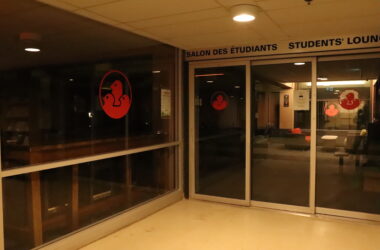Students may have noticed the installation of new card readers in Société de transport de Montréal (STM) buses in recent months. On June 27, the company announced the introduction of enhanced card readers in its vehicles to replace existing ones. The new system will decrease the time it takes to board the bus, while noticeably changing some aspects of its process for customers. The McGill Tribune spoke with the STM about their goals and anticipated timeline for installation.
What is the purpose of the new readers?
Faster boarding and increased accessibility are among the benefits of the new system.
The readers will be used to ensure passengers have sufficient funds on their OPUS and L’Occasionnelle fare cards. They are designed to be more efficient than the existing readers, incorporated into fare collection boxes by reading cards twice as fast. The STM anticipates the technological infrastructure to allow for payment with bank cards in the future, which transportation systems in major cities, including London and New York City, have already begun adopting.
STM Public Affairs Advisor Philippe Déry, explained that the new readers are expected to enhance the experience for passengers.
“Existing card readers were at the end of their life cycle, and thus, the STM seized the opportunity to improve its customers’ experiences by installing new, more efficient readers,” Déry wrote in an email to The McGill Tribune. “[These] will speed up boarding and allow the transition towards new technologies.”
Renovations to the design of the new system will also improve accessibility from the previous readers.
“Universal accessibility will be enhanced through a larger and clearer screen, improved function, and an optimized location,” Déry wrote.
What is the timeline for the project?
The project will involve three major phases: Installation, gradual activation, and eventual service across the whole STM network. Installation of the readers began in May 2019 and will continue until Nov. 2020. On standard buses, a single reader is installed at the front of the vehicle, and on extended buses, another two are stationed at the back. In Spring 2020, the readers will continue to be activated, after the software’s proper functioning is confirmed. All readers are expected to be put into service by Nov. 2020.
“The roll-out is going quite well [and] according to our plans,” Déry wrote.
Will this encourage public transportation use?
The activation of the new readers will still allow passengers to enter through the rear doors of the bus; however, if paying with cash or on a magnetic strip card, passengers will be required to board through the front. Although the primary purpose of the readers is to expedite boarding, confusion may slow the process at first. Enola Hihi, SSMU Sustainability Commissioner, believes the changes to the boarding process may discourage new riders.
“A problem I foresee is an initial confusion, which may hold up lines and deter people wanting to try public transportation for the first time,” Hihi said. “I don’t think this is a bad project, [but] I don’t see the point of investing so much money into it, when the money could be [put] to the [improvement] of bus routes, or possibly buying electric buses.”
On the other hand, Déry predicts that the combined projects of the STM will increase its user base.“This project aims to improve customer service, and it is an added benefit if it encourages more people to take public transit,” Déry said. “In the long term, the addition of other payment options, like bank cards, could facilitate a more spontaneous use of our network.”









